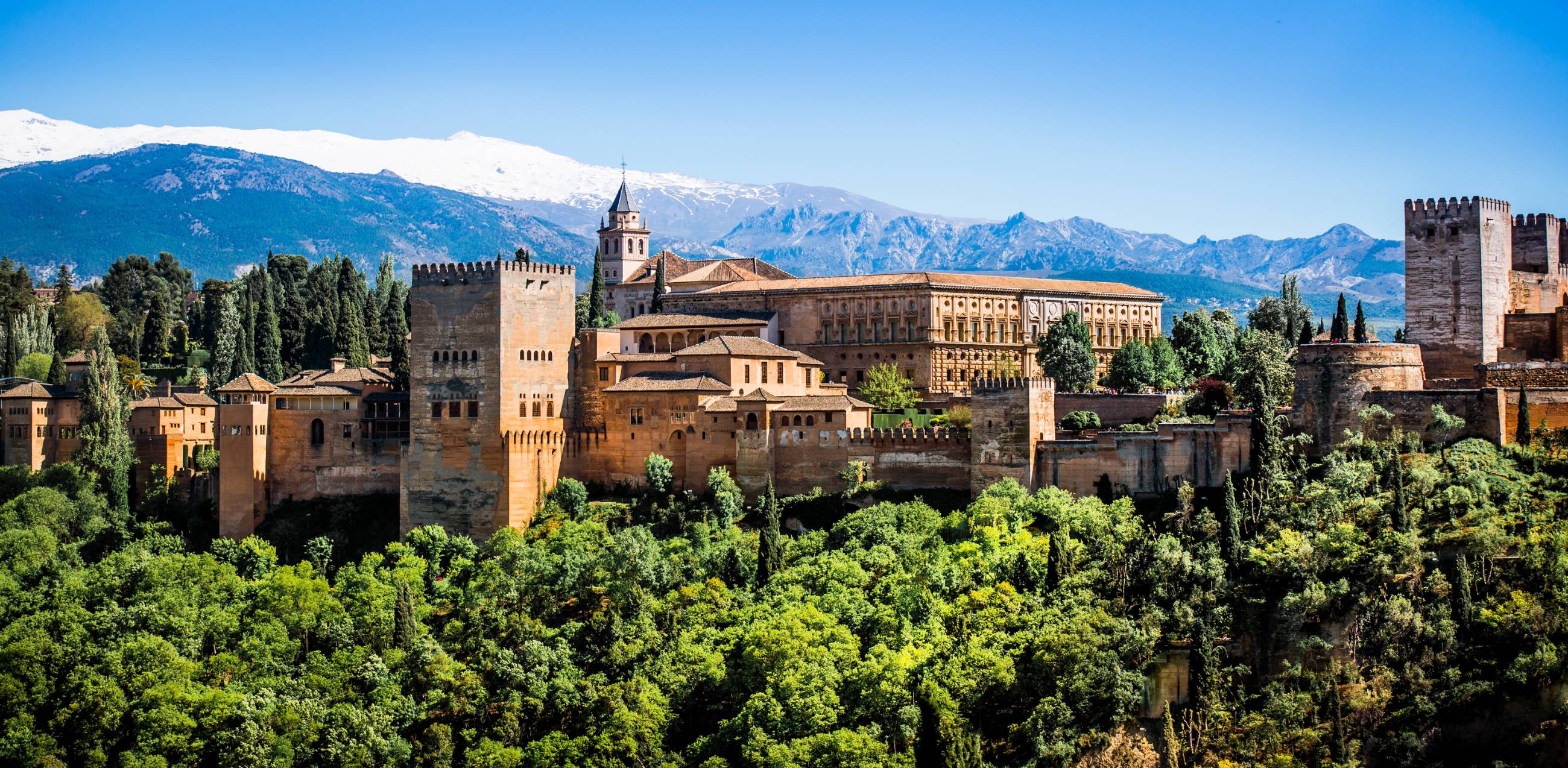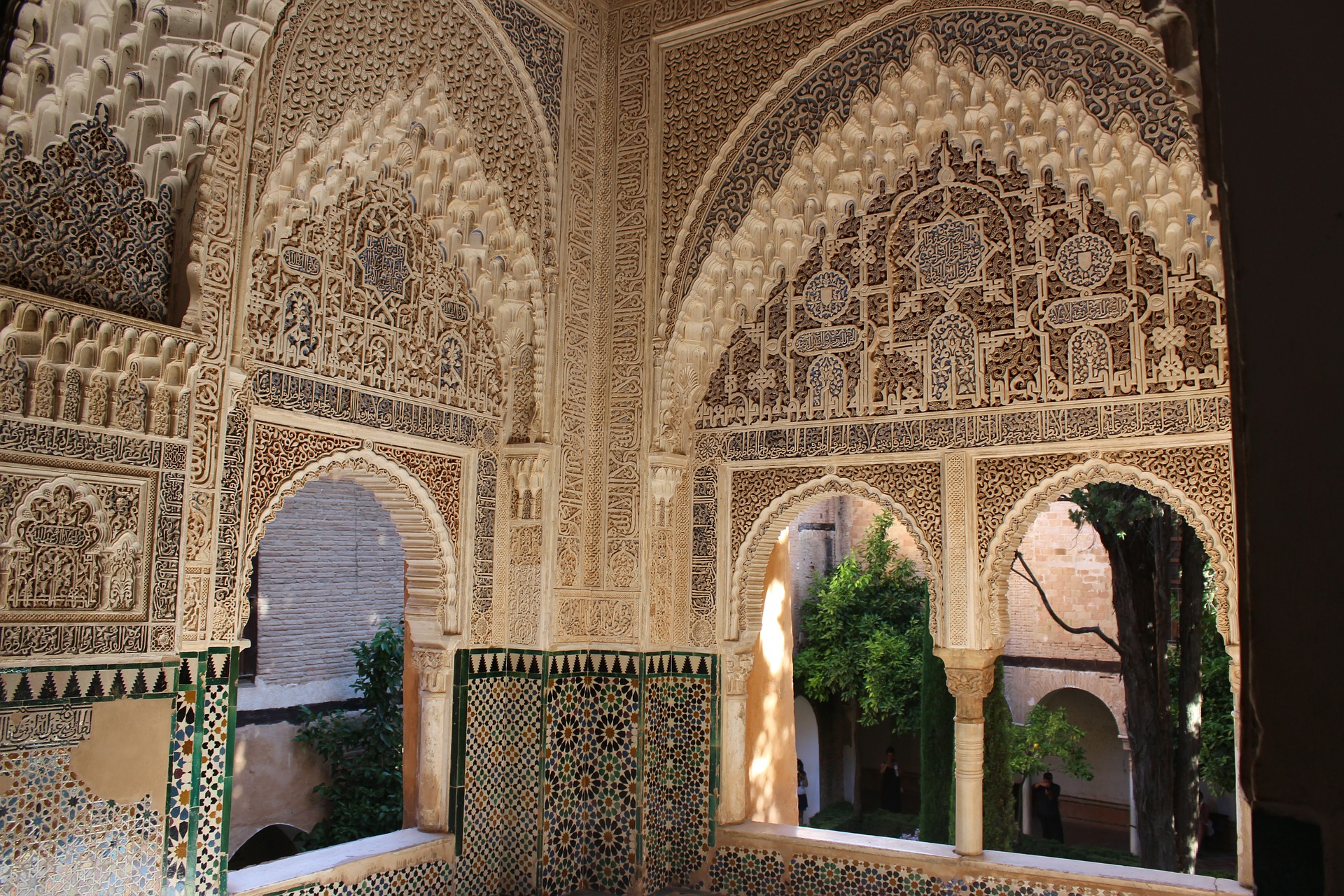La Alhambra
The Alhambra is a city, fortress and palace built by the kings of the Nasrid dynasty of the Kingdom of Granada. It is the symbol of Granada and is the most visited monument in Spain, a true masterpiece of Muslim art in Europe.

The Alhambra was officially declared a World Heritage Site in 1984. Its name comes from the Arabic name for the colour of its walls (Al-Hamra), which were made using local clay, giving the bricks a reddish tint.
A visit to the complex takes at least three hours. It is located on the Sabika hill, near the Río Darro. Most of it is made up of the Generalife gardens, the Palacios Nazaríes and the Alcazaba, built by the Arabs. Of Christian origin are the Palacio de Carlos V and the Iglesia de María, built on the site of a former mosque. The Palacios Nazaríes are grouped irregularly and the different chambers are connected by courtyards or galleries.
The Alhambra dates back to the 9th century, when the Alcazaba was used as a sanctuary. It was in the 13th century when the first Nasrid ruler, Mohammed I, made his royal residence here. His successor, Mohammed II, finished building the walled ramparts. In the 14th century, during the reigns of Yusuf and Mohammed V, the Alhambra acquired its splendid monumental appearance that we still see today. Yusuf ordered the Palacio de Comares to be built, with its impressive tower overlooking the city. The inner chamber of the palace was where the sultan’s throne was located, under the canopy representing the idea of the universe of Allah. Yusuf also added enormous gateways, including the Puerta de las Armas (the main entrance to the Alhambra) and the Puerta de la Justicia.
Mohammed V renovated the Palacio de Comares and added the impressive façade of the Patio Cuarto Dorado. He also built the innovative Palacio de los Leones, moving away from the traditional palace designs of the time and creating a new structure consisting of four parts based on the Eastern Islamic models.

The Alhambra is an unparalleled example of how light and water can be used as architectural effects. By carefully selecting the right materials, the appearance of the buildings changes with the varying patterns of light. The water acts as a kind of mirror, reflecting the architecture and decorative figures, adding to the sense of calm and tranquillity. The water, combining with light, creates optical illusions and helps soften the harsher lines of the horizontal architecture, such as in the Patio de los Arrayanes.
The Alhambra was abandoned in the 18th century. During French rule, part of the fortress was destroyed, and repair and restoration work did not start until the 19th century, which, of course, is an on going process.